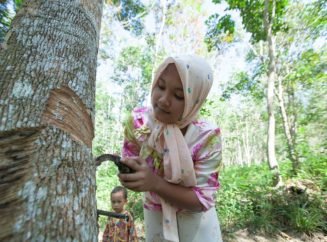Women discrimination and another gender-based inequity in forest tenure and forest governance have so far not been adequately addressed in Indonesia. The involvement of women is lesser than men in decision-making processes that define their access to land and forest resources.
How SETAPAK helps?
- Recognize that forest and land governance is gender sensitive and gender equality should be prioritized in all process, institutional, and governance mechanism in order to promote and protect the rights and involvement of women.
- Admit that integrating gender in forest and land governance – considering the differing needs of women and men in various level of social and economic – is very important for planning and programming.
- Work along with the government and society to support initiatives that expand women’s participation in policy-making processes, improve the representation or women, guarantee equal budget allocation and increase awareness of gender issues to ensure women’s rights.
- Support women activists at the site level in an initiative forest protection and pioneer environmental advocacy.
- Conduct training and facilitation for women facilitator and form circumference group in SETAPAK’s working area to develop the capacity of village-level women in accessing and exchanging information related to women’s rights and sustainable forest and land governance.
- Internalize gender mainstreaming in SETAPAK’s partners’ advocacy agendas and programs through a series of capacity building programs, mentoring and sharing forum for strengthening equal access and control the use of sustainable natural resources.
To download our pager on Gender Justice in Forest and Land Governance, please click the link below:
2 ENG_Achieving Gender Justice in Forest and Land Governance




